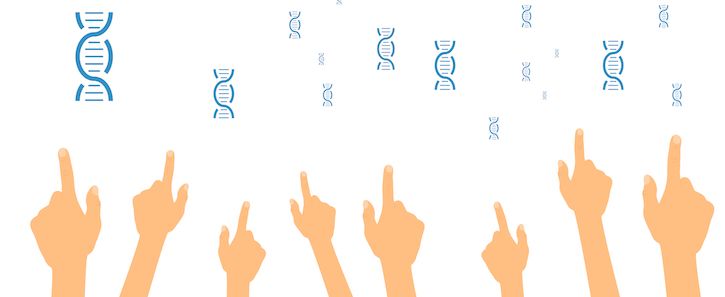Using a Web-Based Platform to Deliver Genetic Results Responsibly
There simply aren't enough genetic counselors to deliver testing results to every patient.

Healthcare can now sequence the whole genome faster and more cheaply than ever before, and demand for genomic testing has grown rapidly, both in clinical and commercial settings.
The problem? There aren’t enough doctors who can interpret and accurately deliver the information. There’s a nationwide shortage of physicians already, let alone of genetic counselors. And most primary care physicians aren’t yet familiar enough with the information—or its implications—to adequately inform patients about their genetic test results.
But technology might help alleviate the bottlenecks that those situations create. Researchers from the National Institutes of Health’s National Human Genome Research Institute (NHGRI) sought to test whether patients could be given their results through a web-based graphic platform and still understand and retain the information the same as they would were it delivered by a live genetic counselor.
In a randomized control trial, 462 healthy adult volunteers participating in the NIH’s ClinSeq program were split between the web-based intervention and live genetic counseling, which was delivered by 1 of the researchers. Preliminary education and results were delivered depending on the arm of the trial that the patient was sorted into, and the counseling was designed to deliver information as similarly as possible to the web platform.
Participants were all heterozygous for a variant in at least 1 gene that causes a phenotype autosomal recessive pattern, and none had previously received genetic testing from the program.
In follow-up surveys delivered at months 1 and 6, the researchers were primarily gauging relevant knowledge, test-specific distress, and decisional conflict, with secondary measures like anxiety, perceived risk, and communication of potentially at-risk relatives. On almost all the metrics, they found the web platform noninferior to genetic counseling at 1 month followup.
At 6 months, small exceptions emerged: satisfaction was slightly lower in the web platform group, although it remained high overall. At 6 months, participants who were parents reported statistically significant increases in decisional conflict around informing family members, but the researchers noted that “the power to detect differences was low.”
More participants in the web platform arm of the study, however, found themselves asking for additional information specific to their results. Only 2.2% of those given live genetic counseling requested information about disease risks, treatment options, and testing options for family members, while 16.1% of those who received their results through the web platform did. Slightly less than half of those in the web group (49.7%) reported that “nothing was missing from the educational sessions,” compared to 77.3% of those in the counselor arm.
Still, the researchers took many positives from the study: they wrote that “there are important service delivery implications of these results” for addressing the “critical conundrum” of too few genetic counselors. The web-based platform may need some refinements, they concluded, like the addition of links to additional information and means of increasing satisfaction.
“It remains heartening that we found no indication of distress or other potential psychological harms that may arise from learning one’s carrier status,” they wrote.
The concept, the team added, might be of use for another NIH genomics program. While ClinSeq is itself a large initiative, the All of Us program aims to sequence 1 million Americans. The work, the researchers hope, may help the agency develop a responsible approach to carrier status delivery in a cohort of that scale.
The study, “Web Platform vs In-Person Genetic Counselor for Return of Carrier Results From Exome Sequencing,” was published this week in JAMA Internal Medicine.